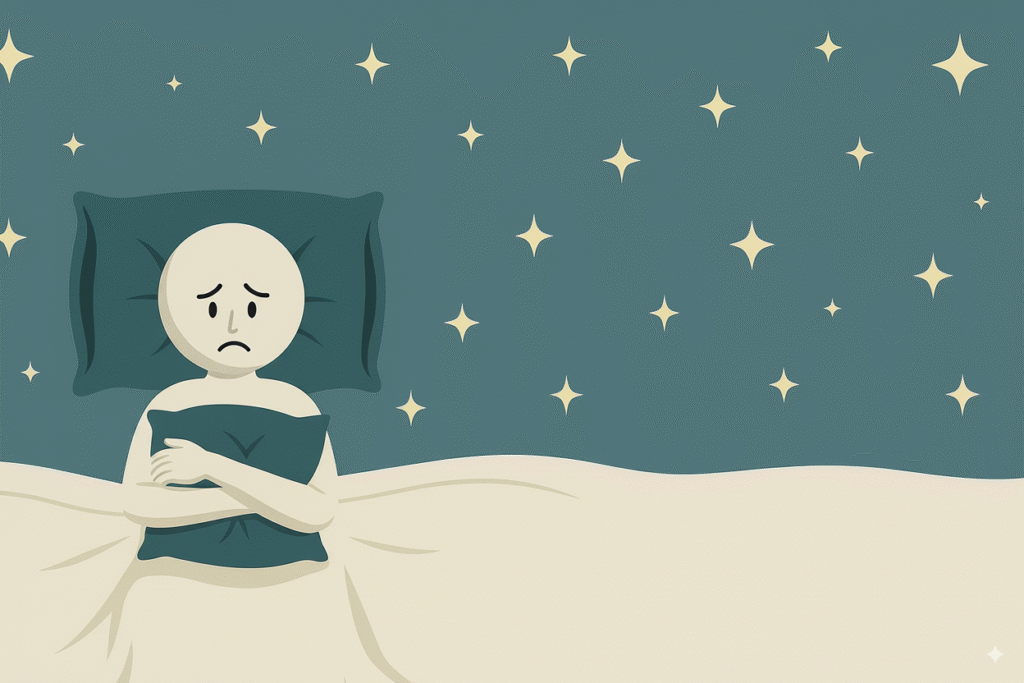I used to be a night person. I read after dark and drove around town because it was quiet and relaxing – the perfect time to study and, of course, to party. My grandmother used to say, “Night is a good counselor. Sleep on it, and in the daylight things will look much better.” She was right, and she still is, except that for bedtime to advise you well, you need a good night’s sleep. With ongoing pain, that isn’t so easy. These days, the dark hours feel literal. Once the lights are out, the ache grabs your attention more easily than during the day; your thoughts get louder, and rest is the only one that doesn’t show. In this article, we’ll cover why chronic pain gets worse at night, how sleep works and what tools you can use tonight. I chose this topic because sleep was the thing I longed for most when anxiety and constant aches took it away. Changing how I approached the small hours made a world of difference.
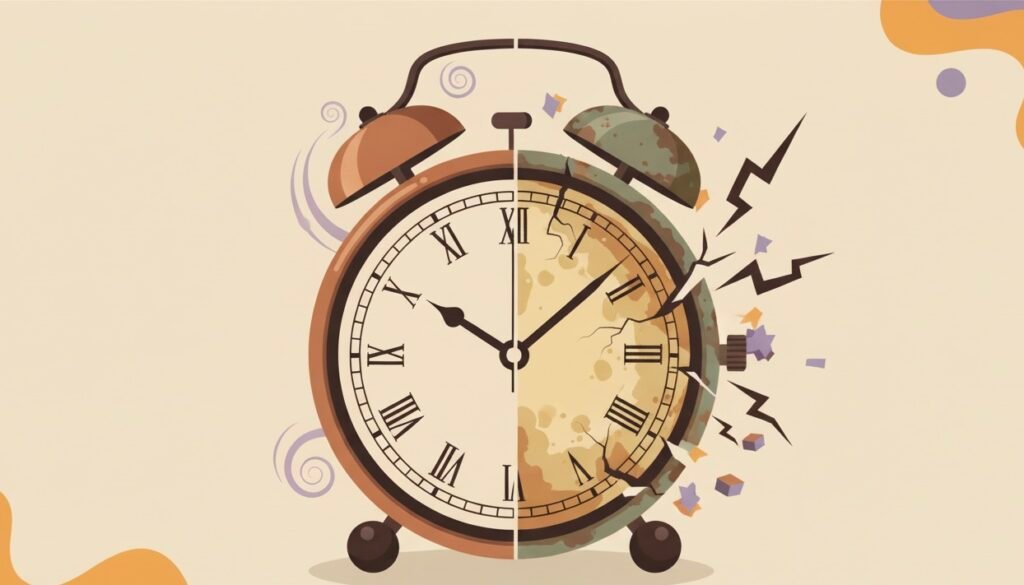
How My Nights Became the Hardest Part
The best thing about being a kid was that I slept deeply. I remember waking at night to go to the bathroom and, if I kept my eyes more or less closed and stayed in my head, I could crawl back into bed and pick up the same dream I’d left. When I got my first job, it was the same. On the early shifts, I arrived home, ate and crashed from around four o’clock until ten, waking to eat dinner and drifting off again until the morning. Even in the bad times, whether stress or illness, until around 24 years old, I could rest it off.
When the chronic pain started their experiment on me, that’s where I suffered most: in the dark hours. I would go to bed with my body aching and simply drained, but with a mind filled with fear. What if I couldn’t drift off again? The rabbit hole was open. For people having insomnia or other sleep disorders, this is a known and feared territory. I lay there, worrying about not being able to fall asleep – and therefore not sleeping – while my brain felt as alive as it could be. The ache rose along with the anxiety. A flare was only two quick breaths away. I couldn’t stay in one position for 15 minutes because of the burning sensation under the skin, so I kept shifting. Stomach-sleeping wasn’t an option. The clock was off-limits, too, because it felt like a direct indicator of my failure. So, the distress, the constant shifting and the ache ruined the night for me. Toward dawn, rest finally arrived out of pure exhaustion. During the next day, the discomfort became unbearable. By the next evening, the same scenario replayed.
Now, I don’t have an all-happy ending to my sleep story yet, because I’m still working on it. But I have found ways to break this pain–fear–no-sleep cycle. Most nights bring satisfying rest, and on the ones I’m not so lucky, I know how not to fall down the rabbit hole. I don’t fear anymore that just because of a sleepless night, all have to be the same.

Sleep and Chronic Pain – What’s Going On Biologically
In this section, I’ll explain why chronic pain gets worse at night in plain language, with scientifical terms attached, and what’s happening under the hood.
What Regulates Sleep: Pressure to Rest and the Body Clock
Falling asleep is easier when two things line up: how long you’ve been awake and your daily timing.
- Sleep pressure builds the longer you’re up; it’s your body’s natural urge to rest (homeostatic drive).
- Your body clock runs on a roughly 24-hour cycle and nudges you to feel alert in daylight and sleepy at night (circadian rhythm).
When these two get out of sync, it’s one reason why chronic pain gets worse at night.
Why this matters: poor sleep increases next-day pain sensitivity (hyperalgesia), but good habits lower that risk. Morning light and a regular wake time keep that clock set; steady routines help both forces work together.
Sleep Stages Explained
Throughout the night, you cycle through different stages of sleep in repeating patterns. Early in the night, you get more deep sleep; closer to morning, you get more REM (dreaming) sleep.
Light sleep (N1): the transition from wakefulness to sleep usually lasts a few minutes.
Stable sleep (N2): a deeper stage where your body temperature drops and heart rate slows. You spend the most time here.
Deep sleep (N3/slow-wave): the most restorative stage for the body. It supports tissue repair, immune function and physical recovery.
REM sleep: where most vivid dreaming happens. Important for memory, emotional processing and learning.
Why Chronic Pain Gets Worse at Night
When you live with ongoing pain, several nighttime factors stack together and make sensations feel stronger:
- Fewer distractions mean sensations stand out (salience): what you could ignore at noon becomes the main thing your attention lands on after dark.
- Pre-sleep anxiety keeps the body on high alert (hyperarousal): looping thoughts (cognitive arousal) and body signs – like a tight chest or quick, shallow breathing (somatic arousal) – delay sleep and keep it light.
- Subtle muscle bracing makes comfort fragile (guarding): holding tension without noticing makes it hard to find, and keep, a comfortable position.
- Irregular timing reduces natural sleepiness (lower sleep pressure / homeostatic drive): when bed/wake times drift, there’s less “sleep pressure” to carry you into deeper stages.
- The alarm system remains activated (central sensitization): ordinary pressure from the mattress or sheets can feel sharper than it should.
- Bedtime can become linked with discomfort (conditioning): after many hard nights, the room and pillow themselves can trigger worry and body tension the moment you lie down.
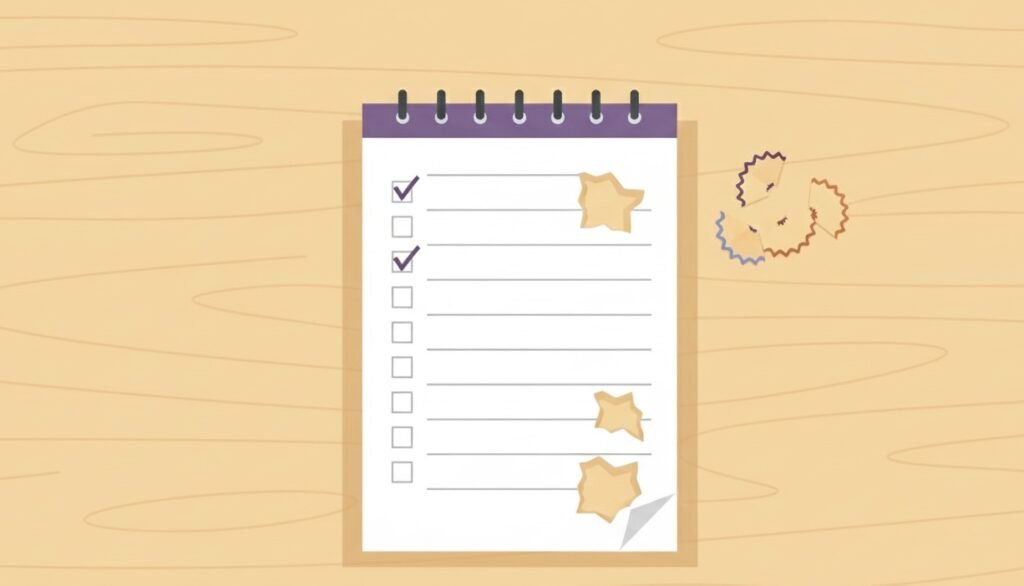
What Poor Sleep Does to the Body and Mind With Chronic Pain
Short or broken nights tilt the system in ways that make pain harder to live with the next day.
- Pain sensitivity rises (lower thresholds; hyperalgesia): ordinary contact can feel more intense than usual – like a soft T-shirt tag, an elastic waistband or a seatbelt rub that feels sharp or burning.
- The brain’s “anti-pain” pathways weaken (descending inhibition): it sends fewer quieting signals down the spinal cord, so everyday aches break through more easily.
You might notice this when a gentle stretch that was fine last week now stings or a minor bump aches for hours. - Sleep continuity breaks (micro-arousals): the night gets chopped into brief wake-ups, so you miss longer, restoring stretches.
This could mean you frequently wake up partially to small sounds and feel as if something always disrupts your sleep. - Deep and dream sleep both shrink (less N3/slow-wave and REM): you wake less restored; stiffer, foggier and less emotionally steady.
Think of struggling to open a jar with stiff hands, reaching for words that come slowly or reacting more strongly to small hassles. - Mood and thinking slip (greater limbic load; reduced prefrontal control): worry weighs more, focus scatters and decisions feel harder, lowering resilience.
That might mean catastrophizing about a routine meeting, re-reading the same paragraph or snapping at someone you wouldn’t normally. - Energy and pacing suffer: stamina drops and “overdo-and-crash” days become more common, which can trigger flares.
You might see this when you power through morning chores, crash mid-afternoon and need the next day to recover. - Daytime naps drift later/longer (reduced sleep pressure by bedtime): there’s less natural sleepiness in the evening, so falling – and staying – asleep gets harder.
Say you take a 60-minute nap at 5 p.m. – you might stare at the ceiling at 1 a.m. - Inflammation signals shift to a pro-inflammatory tilt, making the body more prone to reading threats and amplifying aches.
This can show up as joints feeling sore and heavy after a short walk, or a mild cold making usual discomfort feel louder.
How Good Sleep Reduces Pain and Builds Resilience
Good sleep isn’t just “nice to have”; it actually changes how much discomfort you feel and how well you cope.
Symptoms ease, and spikes are less frequent. You’re less reactive to everyday contact (higher pain threshold; less hyperalgesia).
Flares are milder, and recovery is quicker. The brain sends stronger quieting signals to pain pathways (stronger descending inhibition).
The body settles. Lower background alertness and less unconscious muscle bracing make moving easier the next day (less hyperarousal; less guarding).
Evenings hold together and restore more. Fewer wake-ups, with more deep sleep early (N3/slow-wave) and more dream sleep toward morning (REM) support physical recovery, emotion processing and memory.
Mood, focus and pacing steady. Less doom-thinking, clearer choices and more even energy, help you avoid boom-and-bust patterns (prefrontal control; sleep pressure/activity regulation).
Rehab and coping stick better. New exercises and skills are easier to learn and remember (memory consolidation).
It breaks the spiral. Poor sleep → more pain → more worry → lighter sleep. If rest improves at any link, the complete loop weakens: less discomfort → less worry → better sleep and the cycle turns in your favor (bidirectional sleep↔pain relationship).
Takeaway: even one or two steadier nights a week can reduce pain reactivity, make coping easier and give your daily life more space, beyond just managing symptoms.
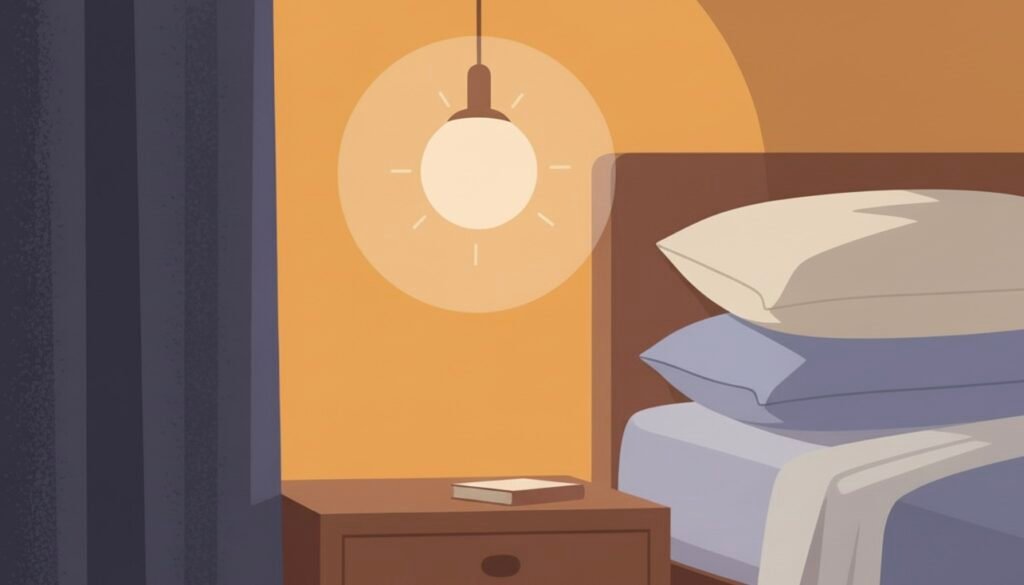
Sleeping With Chronic Pain: Habits That Actually Helped Me
You don’t need to apply all of them. Even one slight change can help.
I’m writing this as someone who struggled for a very long time just to fall asleep. My pain is mostly in my back and neck, often paired with tension headaches. I also have injured sciatic nerves, a small hernia in my lower back and disc protrusions along my spine. I am sharing this because what helped me sleep better related to my body’s needs, and perhaps some of it can help you too.
This isn’t medical advice; please check with your doctor before making any health or medication changes.
Changes That Worked
Timing & Light
I kept a regular sleep schedule: going to bed by 11 p.m., wake-up around the same time every day.
Why it helped: it trained my body to expect rest at night and made it easier to fall, and stay, asleep.
How I did it: even after rough nights, I got up at the same time. I gave myself a roughly 30 minutes window, at bedtime and in the mornings.
I swapped screens for books and took evening walks about two hours before bed.
Why it helped: less stimulation and dimmer light supported melatonin production.
How I did it: Do Not Disturb on my phone, a book near the lamp and the self-message that this helps and it works if consistent.
Media discipline: I stopped doomscrolling and avoided stressful news at night. It didn’t fix everything, but it lowered mental noise.
Movement
I paced my activity during the day.
Why it helped: avoiding the “push and crash” cycle meant fewer spikes in pain and better nights.
How I did it: I’d stop at around 70–80% of what I “could” do, even when tempted to go further.
I went out for daylight walks once or twice a day.
Why it helped: sunlight anchored my internal clock, and light movement built natural sleep drive.
I did gentle exercises every day using a routine created by my physiotherapist.
Why it helped: it lowered muscle tension and helped my body settle at night.
Note: On tough days, I just took walks, paying attention to the pace. Bad days happen, but movement, even small, helps with consistency.
Warmth & Comfort
I often took a hot shower or quick bath before bed.
Why it helped: the warmth relaxed my body and made it easier to wind down.
How I did it: 10–15 minutes in warm water, then straight into my nighttime routine.
I use a low-heat electric heating pillow before sleep.
Why it helped: soothing warmth helped my muscles let go and eased me into rest.
Safety tip: low setting, ~20 minutes, auto-off.
I upgraded my bedding and followed sleep position tips from my physio.
Why it helped: fewer pressure points, more spinal support, less nighttime tension.
My setup: breathable sheets, medium-soft pillows, a good mattress, a small pillow under my knees (on my back) or between them (on my side).
Note: This is personal; what works for me may not work for you. Ask your physiotherapist or doctor how you can adapt the set-up based on your condition.
Food & Drink
I ate dinner earlier, around 8 p.m., and kept it light.
Why it helped: less reflux and less late-night alertness.
I cut back on sugar and sweet snacks, especially in the evening.
Why it helped: fewer blood sugar swings meant fewer wake-ups.
I reduced my coffee and moved my last cup to before noon or 2 p.m.
Why it helped: caffeine stays in the system for hours and can delay deeper sleep.
How I did it: I drank more water, had herbal tea or switched to decaf.
I drank more water overall but stopped about an hour before bed.
Why it helped: better hydration during the day, fewer bathroom wake-ups at night.
Mind & Meds
I sometimes listened to a story or audiobooks, relaxing music while reading, or a neutral podcast before sleep.
Why it helped: using the same audio tone each night trained my brain to associate that with rest.
I also tried meditation/breathwork, choosing based on how I felt.
Why it helped: giving myself flexibility in choosing how to end my day reduced pressure.
I wrote three things I was grateful for every night.
Why it helped: some nights, pain was so loud it drowned out everything else, but gratitude pulled me back to small enjoyable moments. It gave the day a softer end.
I used the fewest painkillers I safely could.
Why it helped: some medications affect sleep depth and quality (especially REM and deep sleep). I adjusted only with my doctor.
I should mention that during the worst times, when insomnia and nightly flares took over, doctors prescribed: melatonin, CBD capsules, diazepam and antidepressants. To be honest, none made a real difference to me. Some left me groggy, while others had almost no effect. They may work for others, but they weren’t what changed things for me.
I need to be very honest with you. At first, when you apply these techniques, you’ll still have rough nights, but that doesn’t cancel your progress. I noticed that sticking to the same routine each evening brings better results. It took me a while to realise that a few solid sleep stretches in a row can slowly shift the baseline.
Takeaway: Feeling safe in your space and around the people you live with makes a world of difference in getting a better night’s rest.
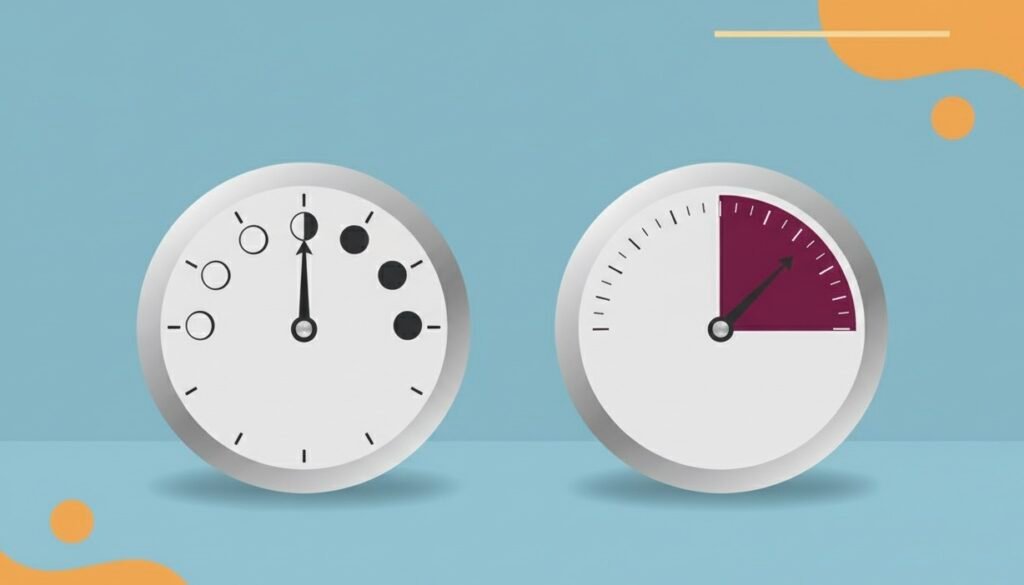
Getting Through a Night Flare
When You Wake Up in Pain and Panic
I lay there for hours, frustrated and often crying, spiraling between blaming my body and the professionals for injuring me even further. I would replay everything since this started, questioning what I could have done differently. There were nights I couldn’t see a way through.
To give you an idea, I’d end my internal monologue with: “This isn’t life, it’s a nightmare.”
I still have difficult nights, but now I have tools that help me ride the wave without feeling overwhelmed. I even fall back asleep, much more often than before. One of the thoughts that helped me most was asking myself: “Can I do anything right now, in the middle of the night, to fix any of the things spiraling in my head?” If the answer was no, I’d say, “Then we’ll look at them tomorrow.” Or, “In the daylight, the pain isn’t so scary and things don’t seem so bad. I’ll revisit it when the sun is up.” That simple shift gave me just enough distance to pause the spiral.
These are things I do gently, without pressure or obsessing about “doing them right.” I don’t fight thoughts with more thoughts; I just give my body and mind something steadier to lean on.
What Can Help Tonight
Small things I do when my nervous system is loud
- Leave the bed, just for several minutes.
Staying in bed in pain used to make it worse. Now, I step into another room, walk around for a couple of minutes even or look through the window. No screens, no doomscrolling, just a soft light. - Breathwork.
I use a box breathing pattern: inhale for 4, hold for 4, exhale for 4, hold for 4. Message: inhale calm, exhale tension. The goal isn’t to knock myself out; it supports nervous system regulation. I have to say that this technique really does it for me. - Talk to the flare.
I remind myself: this is just a flare. My body is on high alert, but I’m not in danger. I’ve been here before, and I got through it. I also try to acknowledge the symptoms without blaming my body. That’s been key. Acceptance helps more than resistance. - Read.
Sometimes I read a few pages of a book, just enough to anchor my mind and stop it from falling down the rabbit hole. - Use familiar sounds.
I play the same sleep track, podcast or calm music I’ve used before. The familiarity itself becomes a comfort. - Ground through warmth or touch.
I use a heating pillow or, with my palm open, I gently apply very light pressure on the painful spots. Small cues like these help send a message of safety. - Use gentle imagery.
I picture myself walking through a peaceful street, watching snow fall outside a window or receiving a relaxing massage with warm oils. It gives my brain something safer to focus on.
Gentle Reminders (What Not to Do)
Avoid checking the time.
I used to. But every time I saw the clock, it felt like failure. Now I keep it out of sight. I remind myself: “The clock doesn’t matter, but feeling safe does.”
Let go of the urge to force sleep.
The harder I tried, the longer I stayed awake. Now I focus on feeling okay in my body. I might fall asleep or not, but the pressure is off.
Do not assume the night is ruined.
One awful hour doesn’t erase all progress. One flare doesn’t undo all your wins. The night is still yours, even if part of it is rough.
Steer clear of blame – toward yourself or others.
It’s crucial not to blame your body or other people for the pain. Even if others may carry some responsibility, blame doesn’t help. It actually fuels stress and adds tension. Be kind in your self-talk; kindness and compassion quiet the alarm far better than critique ever could.
Most important: I don’t force any of this or chase perfection. I just do what feels possible in that moment and let it be enough. You don’t need flawless outcomes either. Just something to hold on to – and that’s what these small actions became for me.
Together we’ve explored why chronic pain gets worse at night and the habits that can help break the loop. Wherever you are, I hope that something I shared today can make your night better. Be kind to yourself and stay curious.
If you got this far,
Get Support in Your Inbox
Subscribe to the newsletter and let me help you turn confusion into clarity. The PDF I have prepared is a guide that will help you organise all the elements of your condition: symptoms, treatments and impact, so you can understand your pain behaviour. This is truly important for explaining it to healthcare professionals, loved ones and yourself.
“Clinical Clarity Workbook–A map for precise diagnosis“
Until next time,
Alina

